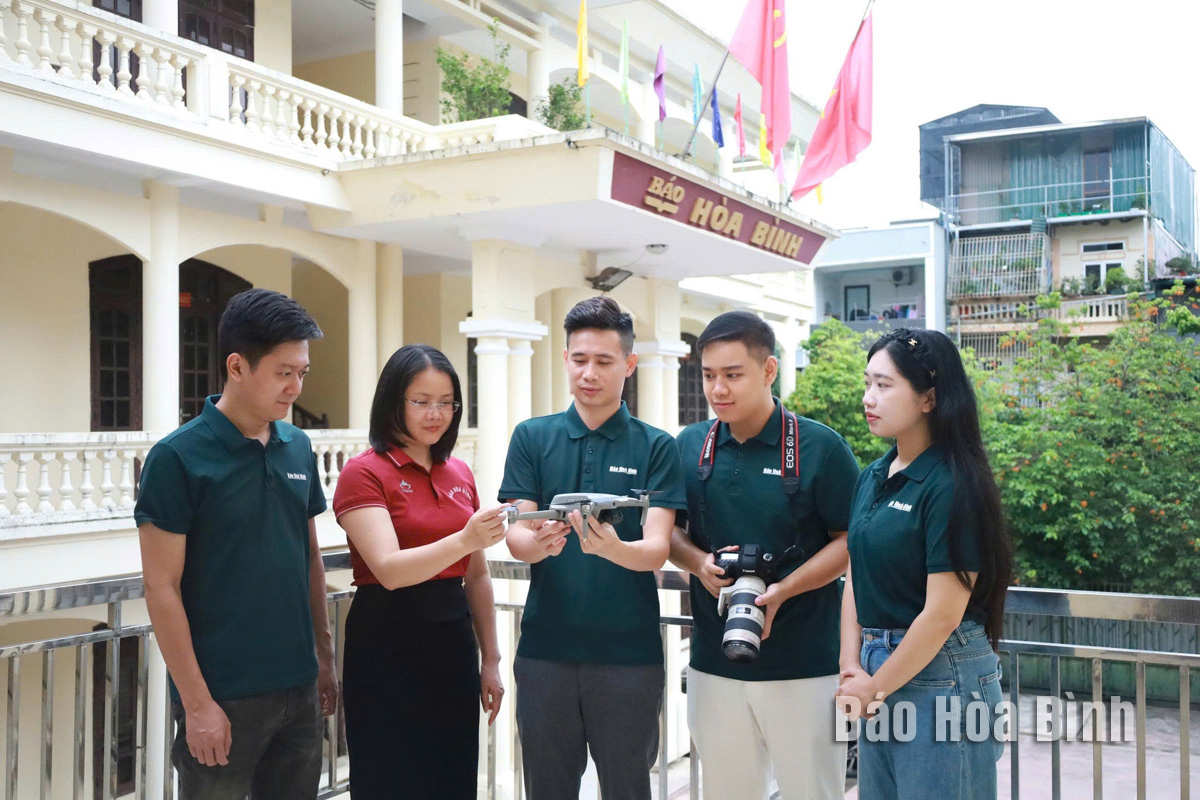
In response to the global digital revolution, Hoa Binh Newspaper is transforming itself into a modern and multi-platform media hub, blending cutting-edge technology with a restructured newsroom and a new generation of tech-savvy journalists.
Journalists from the electronic edition
unit discuss professional media production through the use of cutting-edge
equipment, keeping pace with the current trends in digital transformation.
At the heart of the newspaper’s strategy is its
"integrated digital newsroom”, a centralised system that streamlines the
production of print and online editions for simultaneous release. The outlet
has adopted advanced document management software to enhance operational
efficiency, a move that has optimised internal workflows and leadership
processes.
Journalists in the newsroom, equipped with
state-of-the-art tools, are producing multimedia content that goes beyond
traditional articles and photos to include videos, gif pictures, audio clips,
and vibrant graphic designs.
The newspaper’s online platform, available in
Vietnamese, English, and Muong, offers a rich and immersive experience,
covering local developments alongside national and international news.
Its evolution into a digital and multimedia
outlet is part of a broader vision outlined in Plan No. 12-DA/TU, approved in
2022 by the Standing Board of the provincial Party Committee. This sets a 2030
deadline for transforming the newspaper into a professional, modern and
multi-platform media agency, integrating print, online, radio, and television
operations.
Hoa Binh Newspaper has also made significant
strides in broadcasting. Beyond its traditional radio and television channels,
the outlet has launched the HBTV Go app and integrated with VTV Go, Vietnam
Television’s streaming platform, allowing viewers to access programmes on smart
devices anytime, anywhere. Supported by Vinasat-1 satellite coverage and
platforms like MyTV, the newspaper’s HD-standard broadcasting system is fully
automated, with proprietary software managing every stage of production, from
editing to archiving.
The outlet has further strengthened its digital
infrastructure through a secure iCloud-based system, enabling seamless data
sharing with district-level cultural and media centres, Vietnam Television, and
newspapers of other provinces.
With a modernised infrastructure and a workforce
trained in advanced journalism tools, Hoa Binh Newspaper is aligning with
Vietnam’s national strategy to digitise radio and television broadcasting.
In a move to implement Resolution No. 57-NQ/TW, issued on December 22, 2024 by the Politburo, which targets breakthroughs in science-technology development, innovation, and digital transformation, the Hoa Binh provincial Department of Health has issued a plan to roll out the "Digital Literacy for All” campaign within the local health sector.
An Nghia Commune (Lạc Sơn District) is one of the communes that achieved the tha standard of the national new rural area in 2018. Entering a new development phase, the commune is now trying to meet the criteria for the advanced new rural development. With the strong political will and the public consensus, the commune is gradually overcoming the challenges to reach this goal, aiming for the sustainable development.
Following the direction of the Vietnam Women's Union (VWU) Central Committee, the Hoa Binh provincial Women's Union has proactively and extensively implemented the "Godmother" programme with various practical and creative solutions to support and care for children who become orphans due to the COVID-19 pandemic and other causes. As many as 448 children have received both material and spiritual assistance in the 2021–2025 period.
More than just an information technology teacher, Bui Van Nien is an inspiring figure who has nurtured the scientific curiosity and creative spirit of students in Vietnam’s ethnic minority communities.
Da Bac is the most disadvantaged mountainous district in Hoa Binh province, with ethnic minorities accounting for about 90% of its population. Over the past years, the district has mobilised resources to implement ethnic policies to improve the quality of life of local people.



